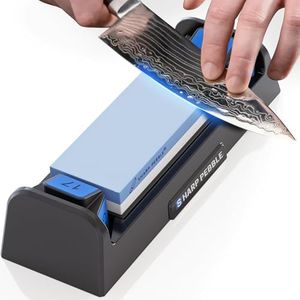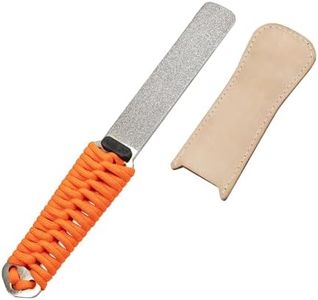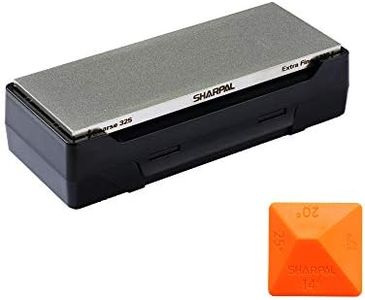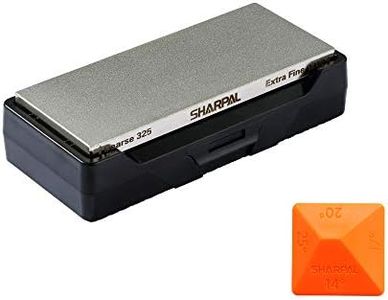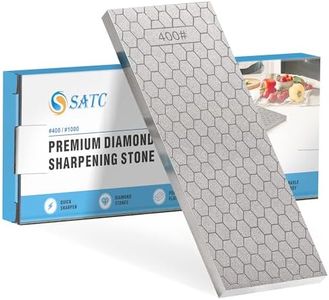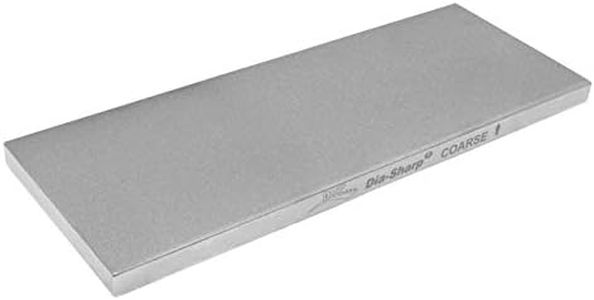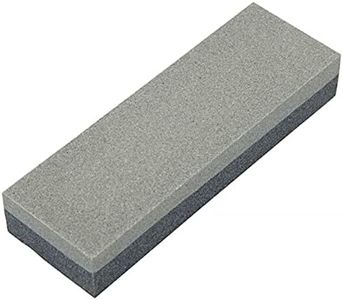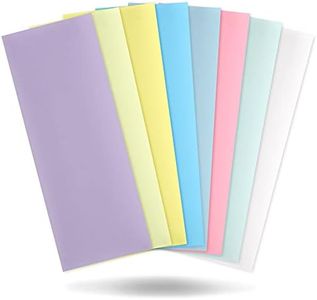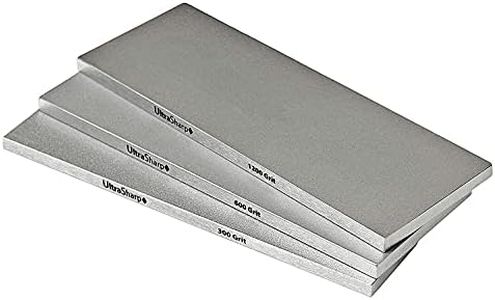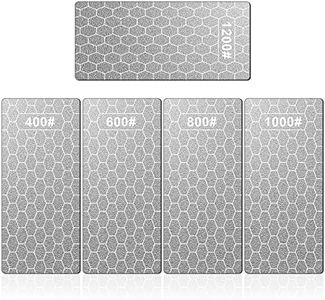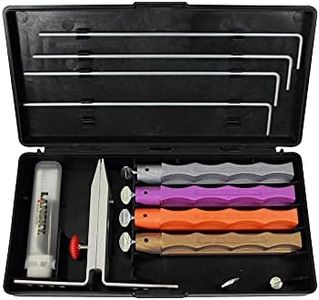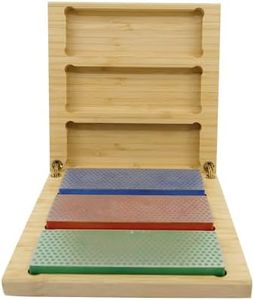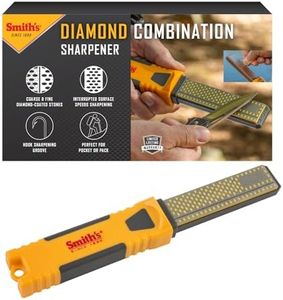10 Best Diamond Sharpening Stones 2025 in the United States
Our technology thoroughly searches through the online shopping world, reviewing hundreds of sites. We then process and analyze this information, updating in real-time to bring you the latest top-rated products. This way, you always get the best and most current options available.

Our Top Picks
Winner
SHARPAL 181N Dual-Grit Diamond Sharpening Stone File Garden Tool Knife Sharpener with Leather Strop Coarse 325 / Extra Fine 1200 Grit for Lawn Mower Blade, Axe, Hatchet, Hedge Shears, Chisels, Drills
Most important from
7323 reviews
The SHARPAL 181N is a versatile diamond sharpening stone, ideal for those looking to sharpen a variety of tools such as knives, axes, lawn mower blades, and more. One of its standout features is the dual-grit design, with a coarse 325 grit for quick sharpening and an extra fine 1200 grit for honing. This makes it suitable for both major sharpening tasks and fine-tuning edges for a razor-sharp finish. The use of industrial monocrystalline diamonds ensures durability and efficiency, boasting a sharpening speed up to five times faster than traditional oil or water stones.
This sharpening stone can be used dry, eliminating the mess typically associated with sharpening stones. The stone is mounted on a stainless steel base, adding to its sturdiness, and comes with a leather sheath that doubles as a strop for polishing edges. Users will also appreciate the included paracord handle for survival tasks and the stone’s relatively light weight of 5.6 ounces, making it easy to handle.
On the downside, the product's compact dimensions (8.66 inches long, 1.65 inches wide, and 0.59 inches high) might limit its suitability for sharpening larger tools. Additionally, while the product's efficacy and convenience are evident, the premium materials and craftsmanship come at a higher price point compared to simpler alternatives. Nevertheless, with a three-year warranty, the SHARPAL 181N presents itself as a reliable and effective sharpening solution for both casual users and serious DIY enthusiasts.
Most important from
7323 reviews
SHARPAL 162N Double-sided Diamond Sharpening Stone Whetstone Knife Sharpener |Coarse 325 / Extra Fine 1200 Grit | Storage Case with NonSlip Base & Angle Guide (8 in. x 3 in.)
Most important from
2712 reviews
The SHARPAL 162N Double-sided Diamond Sharpening Stone is an excellent choice for anyone looking to maintain a variety of cutting tools efficiently. With its dual grit feature, it offers a coarse 325 grit for quick sharpening and an extra fine 1200 grit for honing, which is suitable for hard materials like high-speed steel and ceramics. This product shines with its use of industrial monocrystalline diamonds, ensuring durability and fast sharpening—up to five times quicker than traditional oil or water stones. Its ability to work without messy lubricants simplifies the sharpening process.
The stone’s design includes SHARPAL's MirrorFlat technology, which provides a super flat surface for consistent contact while sharpening. This is a significant advantage over many competing products that can wear unevenly over time. Additionally, the inclusion of a non-slip storage case and an angle guide makes it user-friendly, especially for beginners who might struggle with the right angle for sharpening.
There are a few drawbacks to consider. At 3.08 pounds, it may be heavier than some prefer, which could be a concern for those looking for portability. While the stone is designed to last, it still requires care to avoid damage, especially when not in use. Some users may also find the price point a bit higher than entry-level products, but the quality and performance may justify the investment for serious hobbyists or professionals.
Most important from
2712 reviews
SHARPAL 156N Double-sided Diamond Sharpening Stone Whetstone Knife Sharpener | Coarse 325 / Extra Fine 1200 Grit | Storage Case with NonSlip Base & Angle Guide (6 in. x 2.5 in.)
Most important from
2586 reviews
The SHARPAL 156N Double-sided Diamond Sharpening Stone is a solid choice for those looking to maintain the sharpness of their knives and tools. Its dual grit feature offers a coarse 325 grit for quick edge setting and an extra fine 1200 grit for honing, making it versatile for different sharpening needs. This is particularly beneficial for users who work with hard materials such as high-speed steel and ceramics, as it can sharpen them efficiently without needing messy oils or water. The industrial monocrystalline diamonds ensure durability and a faster sharpening experience—reportedly up to five times quicker than traditional stones.
One of the standout features is the stone's flat surface, made possible by SHARPAL's MirrorFlat technology, which guarantees consistent contact with the blade, leading to better results. Additionally, the product comes with a storage case that doubles as a non-slip base and an angle guide, enhancing usability, especially for beginners who may struggle with maintaining the correct sharpening angle.
There are a few considerations to keep in mind. While the 6-inch by 2.5-inch size is generally manageable, some users may prefer a larger stone for bigger blades or tools. Moreover, the price point may be slightly higher compared to traditional whetstones, although many find the investment worthwhile due to the ease of use and maintenance. Some users have also noted that while the stone is excellent for harder materials, it may not perform as well with softer steels.
Most important from
2586 reviews
Buying Guide for the Best Diamond Sharpening Stones
Choosing the right diamond sharpening stone can significantly impact the ease and effectiveness of your sharpening tasks. Diamond sharpening stones are known for their durability and ability to sharpen a wide range of tools and knives. To make an informed decision, it's important to understand the key specifications and how they align with your specific needs.FAQ
Most Popular Categories Right Now
